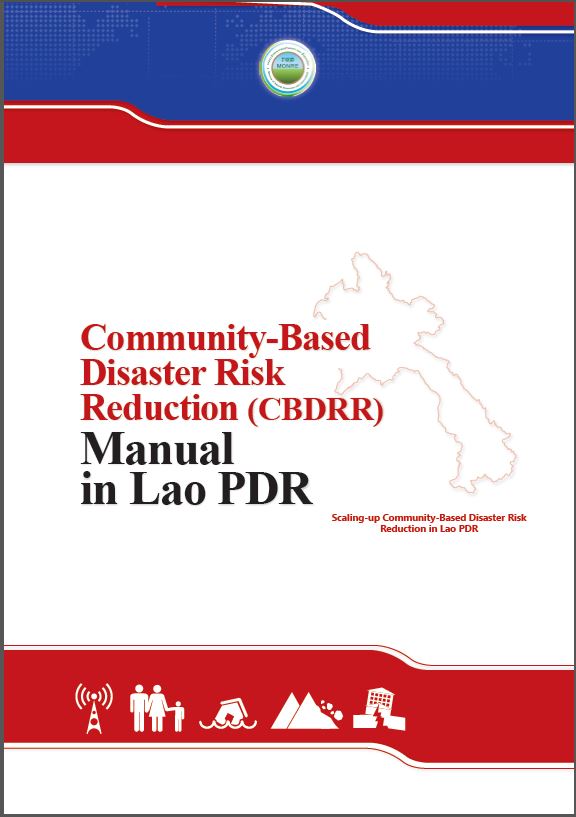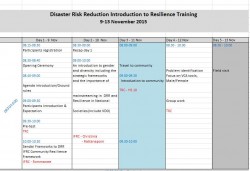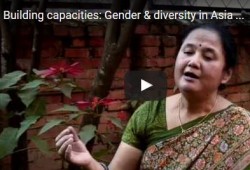Purpose:
The CBDRR Manual is a practical ‘how-to’ guide on community-based disaster risk reduction for government and non-government agencies in Lao PDR. It is a commonly agreed document to be referred to by agencies working on CBDRR in Lao PDR. It provides guidance and support for systematic implementation of CBDRR programs by explaining each of the steps as well as tools used.
The manual will also support the Government of Lao PDR (GoL) to monitor CBDRR activities, oversee progress of activities implemented by different actors and locations, provide necessary support on CBDRR technical knowledge as well as provide a reference point for replication of initiatives for local government and implementing agencies.
The manual was developed through a series of consultations with key stakeholders working on CBDRR in the country both from government and non-government agencies. Therefore, the CBDRR manual is based on
common activities implemented by different stakeholders in Lao PDR incorporating country regulations, government perspective and concerns.
Overview:
The CBDRR manual consists of:
Part I is an introductory part which gives background information about CBDRR in Lao PDR (including the importance of CBDRR in Lao PDR, the stakeholders of CBDRR in the country, as well as an overview about
the challenges and opportunities when implementing CBDRR in Lao PDR).
Part II contains the instructions on how to conduct the eight step process agreed upon by government and non government agencies working on CBDRR in Lao PDR. The 8 steps involved are:
Step 1: Pilot site selection
Step 2: Baseline study
Step 3: Capacity building for CBDRR facilitators
Step 4: Capacity building for VDPCC
Step 5: Community disaster risk assessment
Step 6: Participatory disaster risk management planning
Step 7: Community managed-implementation
Step 8: Participatory monitoring and evaluation
Usage: Guideline for implementation and monitoring
Target audience: National Society staff and volunteers
![]()











